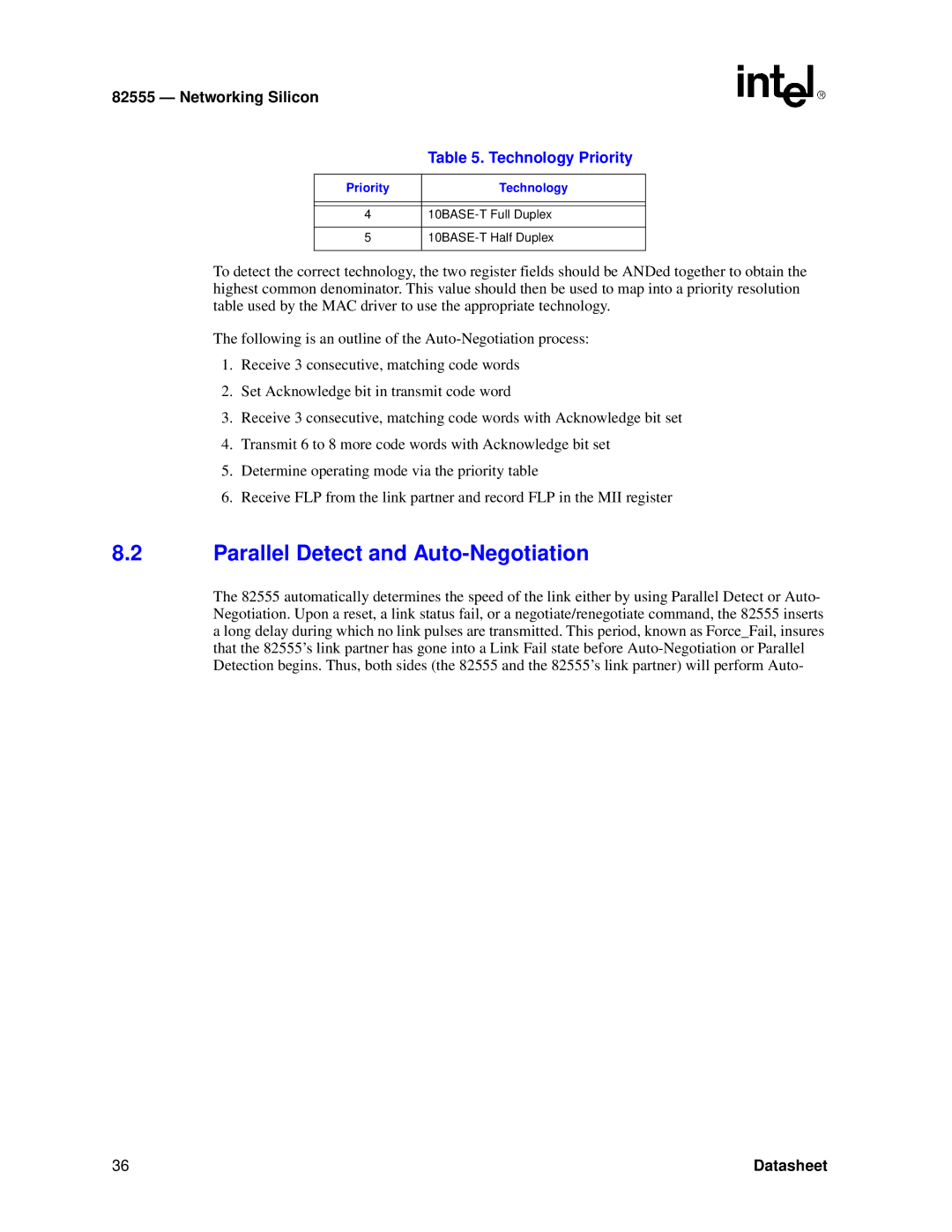
82555 — Networking Silicon
Table 5. Technology Priority
Priority | Technology |
4
5
To detect the correct technology, the two register fields should be ANDed together to obtain the highest common denominator. This value should then be used to map into a priority resolution table used by the MAC driver to use the appropriate technology.
The following is an outline of the
1.Receive 3 consecutive, matching code words
2.Set Acknowledge bit in transmit code word
3.Receive 3 consecutive, matching code words with Acknowledge bit set
4.Transmit 6 to 8 more code words with Acknowledge bit set
5.Determine operating mode via the priority table
6.Receive FLP from the link partner and record FLP in the MII register
8.2Parallel Detect and Auto-Negotiation
The 82555 automatically determines the speed of the link either by using Parallel Detect or Auto- Negotiation. Upon a reset, a link status fail, or a negotiate/renegotiate command, the 82555 inserts a long delay during which no link pulses are transmitted. This period, known as Force_Fail, insures that the 82555’s link partner has gone into a Link Fail state before
36 | Datasheet |
